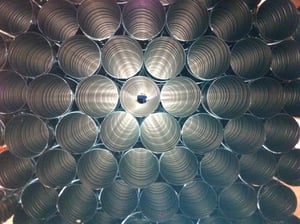 R.E.A. Holdings Plc (LON:RE.) – the announcement of an improving set of full year results for 2017 was complemented by the announcement that REA Kaltim (REAK) had entered into a conditional agreement for the sale of a 95% holding in the PBJ estate to KLK. Expected gross proceeds of $85m are anticipated to evolve at ca.$57m net of repayment of external borrowings and transaction costs. This represents an elegant solution to de-leveraging the balance sheet, focusing on a more contiguous plantation area, and freeing up capital for the remaining landbank. The transaction value compares favourably with market valuations of strongly performing Indonesian operators.
R.E.A. Holdings Plc (LON:RE.) – the announcement of an improving set of full year results for 2017 was complemented by the announcement that REA Kaltim (REAK) had entered into a conditional agreement for the sale of a 95% holding in the PBJ estate to KLK. Expected gross proceeds of $85m are anticipated to evolve at ca.$57m net of repayment of external borrowings and transaction costs. This represents an elegant solution to de-leveraging the balance sheet, focusing on a more contiguous plantation area, and freeing up capital for the remaining landbank. The transaction value compares favourably with market valuations of strongly performing Indonesian operators.
Strategy: REA Kaltim, the principal division of REA, is developing a land bank of some 110,000 ha. At the current accelerated rate of development, the proprietary plantations should be completed by 2021 or 2022, at ca.50,000 ha.
Changing Fortunes: The 2017 result evidences improving trends in estate productivity and operational efficiency. Nevertheless, further recovery is expected, and needed, over 2018, if 2019 is to prove the transition year we have projected.
Valuation: The share price of the REA Ordinaries has responded well to news of the PBJ disposal and the valuation is now in line with sector peers at $12,501 per planted ha, excluding our valuation for the electricity operations and the carrying value for the coal and stone assets. The higher value accorded to MP Evans, recalls that it has been the focus of a take-over bid by KLK. In this context, readers will note that DSN has not excluded returning to acquire more of REAK.
Risks: Agricultural risk, commodity price risk, and country risk are constants of palm oil production. The deleveraging of the balance sheet to give 2018 projected net debt to equity of 66.5% (76.5%) with the sale of the PBJ estate, will help to reduce funding risk, which is a standard threat to plantation projects.
Investment summary: R.E.A. Holdings Plc has scope, with its remaining plantable landbank of ca. 23,000 ha, to develop a planted estate of some 50,000 ha. We believe that the group’s financial performance undergoes significant change from 2019 forwards. We are assuming some 34,000 ha of mature plantations for end 2019, coupled with stronger agricultural production across the estates, and a firmer CPO price. If these factors align as anticipated, then this will mark the point at which the business becomes self-sustaining.









































